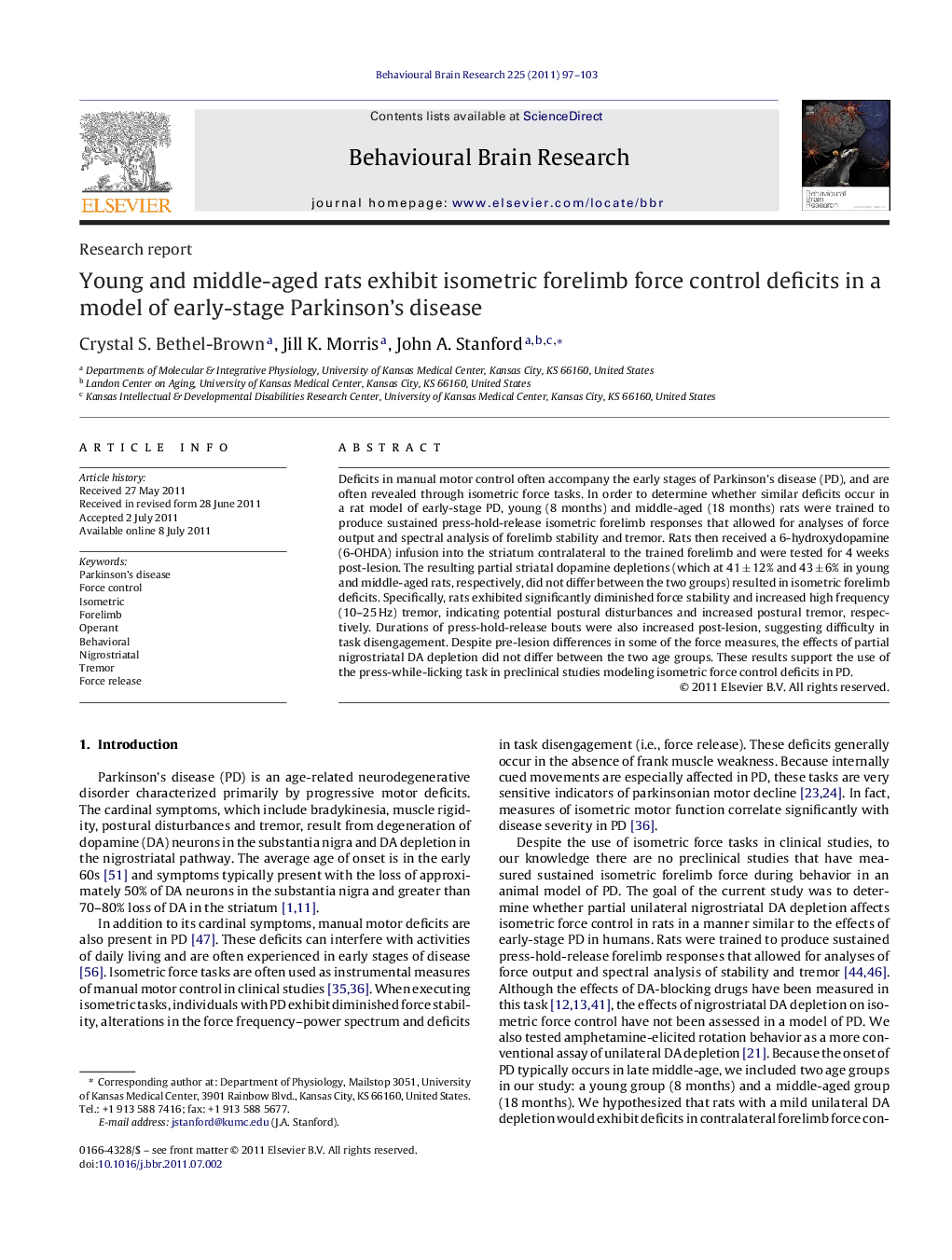| Article ID | Journal | Published Year | Pages | File Type |
|---|---|---|---|---|
| 4313294 | Behavioural Brain Research | 2011 | 7 Pages |
Deficits in manual motor control often accompany the early stages of Parkinson's disease (PD), and are often revealed through isometric force tasks. In order to determine whether similar deficits occur in a rat model of early-stage PD, young (8 months) and middle-aged (18 months) rats were trained to produce sustained press-hold-release isometric forelimb responses that allowed for analyses of force output and spectral analysis of forelimb stability and tremor. Rats then received a 6-hydroxydopamine (6-OHDA) infusion into the striatum contralateral to the trained forelimb and were tested for 4 weeks post-lesion. The resulting partial striatal dopamine depletions (which at 41 ± 12% and 43 ± 6% in young and middle-aged rats, respectively, did not differ between the two groups) resulted in isometric forelimb deficits. Specifically, rats exhibited significantly diminished force stability and increased high frequency (10–25 Hz) tremor, indicating potential postural disturbances and increased postural tremor, respectively. Durations of press-hold-release bouts were also increased post-lesion, suggesting difficulty in task disengagement. Despite pre-lesion differences in some of the force measures, the effects of partial nigrostriatal DA depletion did not differ between the two age groups. These results support the use of the press-while-licking task in preclinical studies modeling isometric force control deficits in PD.
► Partial striatal dopamine depletion disrupts isometric force control in rats. ► Forelimb instability, deficits in force release and increased tremor were seen. ► Force deficits were similar for young and middle-aged rats. ► The press-while-licking task models force deficits seen in Parkinson's disease.
